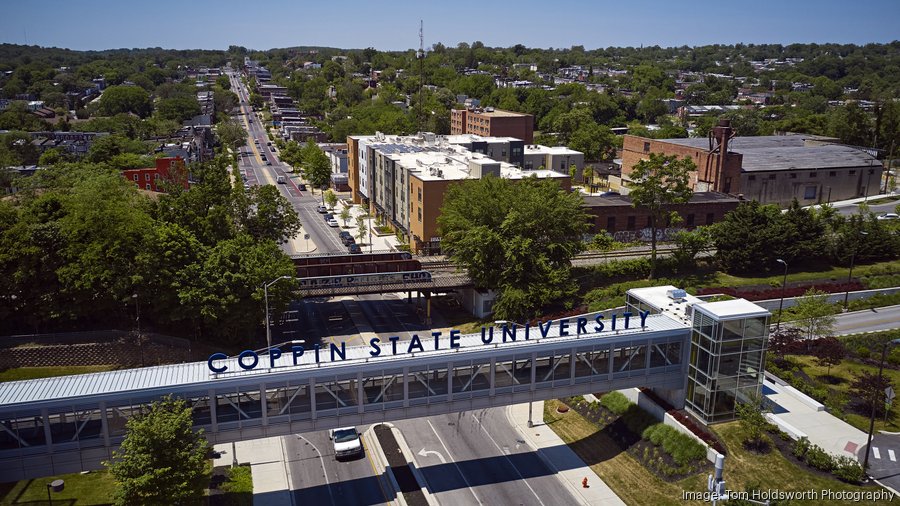Listen to this article 3 min
Coppin State University is planning to construct an eight-story residence hall to build the infrastructure necessary to implement an on-campus residency requirement for freshman and sophomore students.
The planned 109,049-square-foot residence hall will add 350 beds to the university, increasing the total to roughly 1,000 overall. According to a request for proposal (RFP), the university is budgeting up to $40 million for the project. Coppin spokeswoman Robyne McCullough said that the school does not have a firm timeline for when it will require all freshman and sophomore students to live on campus, but added it'd likely be after the new dormitory is built.
Officials say construction on the new dorm is likely to start in 2024.
President Anthony Jenkins told the Baltimore Business Journal that he hopes the residency requirement will boost retention at the Baltimore historically Black university. The institution's undergraduate enrollment has declined by 46% since 2010, from 3,298 to 1,757 in 2022 and its retention rate lags behind other local HBCUs.
"This new residential facility is not focused on the growth, but more so on retention, which has a direct impact on the growth of the institution," Jenkins said. "Universities who house more students on campus have higher retention rates, higher graduation rates, higher completion rates, and greater college satisfaction."
A recent study by a Kent State University professor found that a higher retention rate is especially pronounced in students who performed relatively poorly in high school. For students who performed in the bottom third in high school, living in a residence hall meant they were 9% more likely to return for a second year of school.
The university's two-year retention rate lags behind some of its peer HBCUs in Maryland. The two-year retention rate of 2021 freshman students at Coppin is 59%, compared to 69% at the University of Maryland Eastern Shore, a similarly sized HBCU in Maryland. Coppin's freshman enrollment increased by 11% between 2015 and 2020. That increase in freshman enrollment couldn't make up for the university's retention issues however, leading to a decline in total undergraduate enrollment over that same period from 2,668 students to 2,108.
"Coppin doesn't have an enrollment problem, we have a problem with retention," Jenkins said.
The lack of housing has an impact on enrollment as well as retention. Coppin State lost 600 prospective students from 2015 to 2020 who chose other universities in part because the HBCU did not have enough on-campus housing to accommodate students, Jenkins said. The school got the information based on students who were accepted to Coppin but declined to attend the school after they were notified there was no bed space, he added.
Coppin's freshman population is starting to recover from the Covid-19 pandemic, increasing by 54 students from 2021 to 2022. The school's 2022 freshman enrollment of 486 is still far below the university's pre-Covid freshman class of 761 students.
Coppin's retention issues are in part caused by the university serving a poorer student body, Jenkins said. At Morgan State University and the University of Maryland Eastern Shore, 57% of students in 2021 were eligible for Pell grants, a program available to students with exceptional financial needs. At Coppin, 71% of students in 2021 were eligible for the program, according to the U.S. Department of Education College Scorecard. Coppin is one of the most affordable University System of Maryland institutions with an average annual cost of $10,105.
"When our students are faced with economic challenges and they have to decide between going to work or going from being a part-time to the full-time student or stopping out, they have to go work," Jenkins said.
Coppin State University is not the only Baltimore school suffering from enrollment declines. The Maryland Institute College of Art undergraduate enrollment decline caused the school to plan for a round of buyouts later this year. MICA is planning to lease its extra dorm space to other institutions to have a productive use of the leftover real estate.
